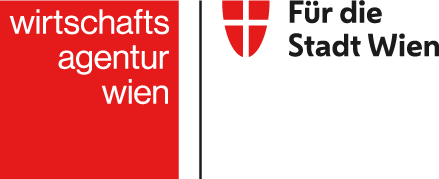Lesbian history and stories from Vienna
Lesbian history and stories
Whether it’s a museum or a gallery where lesbian references await discovery, the capital’s opera houses and concert halls which have always been a magnet for lesbian audiences and performers, or Vienna’s cafés and bars that have provided the setting for countless lesbian stories to be retold and written into the annals of history.
The house of Habsburg that ruled Austria for centuries had its own lesbian and gay passions, Sigmund Freud’s couch welcomed lesbian patients, and the large number of gay and lesbian actresses and singers to have graced Vienna’s stages have cast countless culture fans under their spell – and not just the lesbians in the audience.
The second woman’s movement of the 1970s led to the establishment of new spaces for females, some of which are still used by lesbians and other women in the city to this day. Examples include the Frauencafé (now known as the Fc_Frauencafé Wien), FrauenLesbenMädchenZentrum Wien with the FZ-Bar, and Stichwort, the archive of the women’s and lesbian movement and home of the editorial team behind feminist monthly newspaper an.schläge – now in its fourth decade – as well as feminist review paper WeiberDiwan, which carefully dissect the latest publications on the lesbian literature scene. The space previously occupied by feminist newspaper AUF, which ran from 1980 to 2011, has been home to feminist book store ChickLit and its huge lesbian range since 2012. Niche publisher Zaglossus Verlag has released academic publications and novels with a focus on alternative and queer lifestyles since its foundation back in 2009, including a new edition of the first comprehensive work on the history of lesbian woman in the German-speaking world, Frauen und Freund_innen, by Hanna Hacker.
HOSI (Homosexual Initiative Vienna), founded by a group of gay men in 1979, has had a lesbian group since 1981. Back in 1982 a group of lesbian and gay Viennese occupied an apartment building on the Linke Wienzeile in the sixth district which they refurbished and affectionately named “the Villa”. Today it is a highly visible meeting point for the capital’s LGBTIQ community, hosting many events and support groups, and home to the Café Willendorf “bar-restaurant for queers and friends”, open in the evenings. Also based there, “Lila Tipp” has been set up as a drop-in center for lesbians and transgender people, and there’s an extensive library.
Among the countless stories surrounding the old Habsburg monarchy – in this instance documented in private correspondence – is the tale of the great love between Isabella of Parma, wife of Emperor Joseph II, and her sister-in-law Marie Christine. The nineteenth century saw the emergence of a female-led cult surrounding Empress Elisabeth, who is perhaps more commonly known as Sisi. The popular Sisi Museum in the Hofburg confirms that even after all these years she is still able to set queer pulses racing! Archduke Ludwig Viktor, known in the family as Luziwuzi, is also worthy of particular mention: numerous charming photos of Emperor Franz Joseph’s youngest brother decked out in women’s clothing have survived to this day.
Among the lesbians to have reclined on Professor Sigmund Freud’s famous couch (the original is in the Freud Museum in London) are his daughter Anna, who lived with her parents in Berggasse – where her partner Dorothy Burlingham also kept a flat – until the family was forced to flee the city in 1938. His patient also included a host of other homosexual women such as Margarete Csonka, whose case featured in Freud’s 1920 essay on the psychogenesis of female homosexuality. Shortly before she died, Csonka told her life story to lesbian activists Diana Voigt and Ines Rieder, who published it under Vienna’s Zaglossus imprint as “The Story of Sidonie C.”
Like other major European cities, 1920s Vienna was home to lesbian stars, who, under the threat of prosecution, were obliged to operate under the cloak of anonymity. The Vienna State Opera witnessed performances by singers such as Lotte Lehmann. Famous ballet dancers Tilly Tosch and Hedy Pfundmayr danced together here and could also be found at Vienna’s legendary Tabarin revue theater on Annagasse in the first district. The venue also played host to Berlin-based naked cabaret dancer Anita Berber, who went on to cause a furor with her performances at the Konzerthaus. Berber liked to go out to the Tabarin with her lovers, including the widely recognized Leonie von Puttkamer – the great love of Margarete Csonka – as well as to the bar of the Parkhotel Schönbrunn, which today hosts the city’s Rainbow Ball.
When the composer Alban Berg began work on his opera Lulu in the late 1920s, he presumably drew inspiration for the lesbian Countess Geschwitz from his sister Smaragda, herself a passionate musician, who freely professed to having relationships with women for years, which was rather unusual for the time.
In the late 1930s, Volksoper actress Dorothea Neff moved into an apartment opposite the Tabarin, in which she hid her Jewish girlfriend Lilly Wolff between 1942 and the end of the war. Unlike in the “Third Reich”, the ban on homosexuality in section 129 of the Civil Code of the national socialist “Ostmark” remained in force until the 1970s. It was not until its repeal that Dorothea Neff revealed her experiences during that time, and of the need to hide as the “greatest acting role” she ever played. The politician Rosa Jochmann, survivor of the infamous Ravensbrück women’s concentration camp and for many years chairwoman of the Socialist Women’s Movement, made as little publicly of her relationships with women as the first Austrian Minister for Women, Johanna Dohnal, who came to office in the 1990s. It was not until her withdrawal from politics and a change in the prevailing political climate that Dohnal finally felt able to publicly confirm her relationship with her partner.
Source: Vienna Tourism

